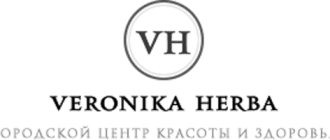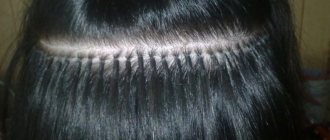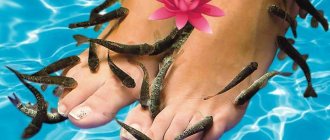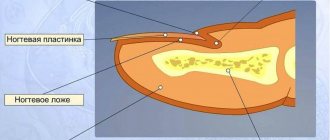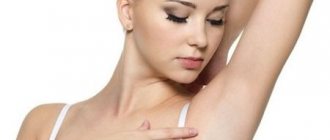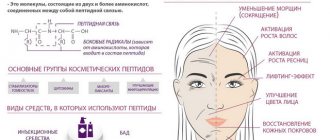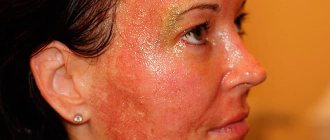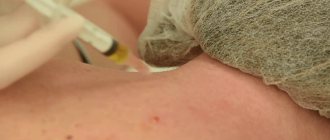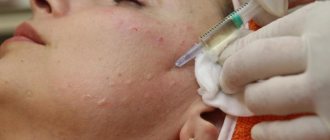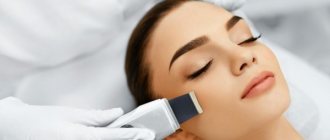Every day your legs experience serious stress. Without careful, regular care, the skin on the feet becomes covered with rough patches and calluses, cracks, and nails begin to deform and grow in, causing pain. But there is not always time for hours-long, thorough procedures. In this case, one of the most effective and fastest options is a hardware pedicure. Experienced specialists in the salon tidy up the legs quickly and safely; all that remains is to choose the appropriate decorative design. If you wish, you can master hardware processing at home.
View this post on Instagram
Posted by Unreel (@extremeofficial)
What is a hardware pedicure
Hardware pedicure is a mechanical treatment of the skin of the foot, nails and toes using a special grinding tool with cutters and various attachments. The device, due to the rapid rotation of the cap, safely removes keratinized epithelium, corrects the nail bed, polishes the nail plates and removes cuticles.
The pedicure device has several operating modes, adjustable to different power and speed depending on the condition of the skin. After each session, removable attachments are treated with an antiseptic, ensuring absolute hygiene.
Operating principle of the device
Before using a manicure machine, you need to familiarize yourself with its structure. Externally, the device quite closely resembles a compact dental machine, so it can cause bad associations. There is no need to be afraid: once you gain experience, it will only take you a couple of minutes to paint one nail, and unpleasant comparisons will be a thing of the past!
The body of the device is a plastic block with an electric motor inside. A handle on a long wire with a plug at the end is connected to it. Various attachments and discs are inserted into the handle. Using attachments, you can properly sand, grind, or file down the nail plate. Keratinized skin, calluses and corns are removed quickly and painlessly.
Hardware manicure removes the cuticle. Unlike a cutting machine, a manicure machine does this carefully and non-traumatically. However, additional cutters may be required to complete the procedure.
Important! The device can be powered from a wall outlet, but there are battery-powered models. The first option will be easier to use.
There are several buttons on the body of the device. Their purpose is quite easy to recognize by their signatures or icons symbolizing a specific function. The largest is the power button: it is responsible for activating the device. The speed of the cutters is adjusted using a wheel. The direction of rotation does not switch automatically, so there are corresponding switches on the body, forward and reverse. There are models with switching between foot and hand modes: F and H, respectively.
Features of hardware pedicure
The main feature of this treatment is the treatment of dry skin without prior steaming. The dead layer of epithelium is removed gradually in exactly the amount that is acceptable for the current condition of the feet.
Other features include:
- efficiency - different attachments not only tidy up nails, but also remove corns and calluses, leaving the skin smooth and soft;
- versatility - the device can be used even on sensitive skin without the risk of damage or fungal infection;
- the presence of a professional master - only a trained master can carry out the procedure correctly;
- therapeutic effect - hardware care eliminates cracks and ingrown nails.
Features of the profession
A podiatrist examines the feet and diagnoses the problem. In some cases, additional examination by specialized specialists is required, because foot problems often indicate the presence of acquired or chronic diseases, as well as inflammatory processes occurring in the body. A podologist diagnoses and eliminates the following problems:
- ingrown nail plates;
- fungal infection of the feet and nail plates;
- inflammatory processes associated with deformation of the nail plates;
- calluses, corns;
- increased sweating;
- cracks on the foot, others.
The forgery may recommend that the client see a doctor, but his competence does not include treatment. We are talking about prescribing medications and procedures; in the case of a serious illness, treatment is carried out by endocrinologists, purulent surgeons, orthopedists and other specialists with higher medical education.
The main differences between classic and hardware pedicure
Both classic and hardware pedicures are considered the most popular in beauty salons. Their differences are as follows:
- Performance technique. For hardware care, you need a special tool with attachments, each of which performs a specific function. For the classic one, a set of tools is required, consisting of pumice, scraper, tongs, etc.
- Steaming. It is only necessary in the classic version. In a pedicure with a device, the skin is softened with special lotions and gels.
- Application of the trimming method. Only in the classical procedure is the skin cut off, increasing the risk of injury and infection with fungal diseases.
- Price. Hardware pedicure is much more expensive.
- Duration of effect. When treating feet with a sanding device, the skin remains smooth on average 2 weeks longer.
SPA pedicure
This procedure is not only for care, but also for relaxation. When performing a SPA pedicure, no cutting objects are used, there are no injuries or discomfort. To cleanse and moisturize the skin, peelings, masks, serums, creams, and aroma oils are used. SPA pedicure is soft and gentle, it gives a relaxing effect and puts you in a positive mood.
| But for severe foot problems, it is better to combine this procedure with other types of pedicure. |
| Choosing the best pedicure option is, of course, individual. But still, in order to walk with an easy gait, it is worth choosing modern methods that have already proven their effectiveness. |
Pros and cons of hardware pedicure
The advantages of such care include:
- Safety. During the procedure, contact with sharp objects is excluded, thereby reducing the likelihood of cuts and infection through them with infectious diseases.
- Sterility. Before work, the master treats his hands and all tools with antiseptic agents. If disposable devices are used, they are in a sterile bag and opened in front of the client.
- Lack of water. To soften the skin, keratolytic substances (ointments, creams, lotions) are used, which, in addition to their main function, also have a tonic effect.
- Lasting results. The attachments remove only the stratum corneum of the epithelium without damaging the healthy one. Regeneration processes do not start, and the skin grows slower.
- Speed of the procedure. Treatment of nails with the device is carried out relatively quickly.
- Painless. The rotation of the cutters and attachments feels like a light massage. Only very sensitive skin may experience slight discomfort.
- Minimal contraindications. Hardware pedicure is suitable for different conditions of the feet and is contraindicated only for people who are allergic to the components of metal attachments.
This method of foot treatment has significantly fewer disadvantages:
- high price in showrooms due to the cost of the device itself and consumables;
- if you don’t have a tool and/or experience working with it, you won’t be able to do such a pedicure at home;
- people with sensitive skin experience a burning sensation during the procedure.
Proper home care
“You need to take care of your feet at home,” comments Anna Shevchuk. - Both in winter and in summer, the skin dries quickly, and therefore can become rougher and thicker. You shouldn't wait until your feet become rough and overgrown and only then go to the salon. If you maintain their condition at home, your legs will be neat and painful sensations will not arise.”
The expert advises cleaning your feet with a foot file twice a week. It is better to do this after a shower or bath, when the skin is steamed and the stratum corneum is easily removed. First you need to rub the legs with the hard side of the grater, and then use the soft side. After this treatment, there will be no rough areas left, and the heels will become smooth and soft.
Then you need to apply a moisturizing or nourishing cream. This type of care should be performed all year round. You can use either a regular file or an electric one, which helps keep your heels in perfect condition between professional pedicures. But you don’t have to rely on newfangled devices. An ordinary foot grater copes with this task no worse, and costs several times less.
Types of hardware pedicure
There are several types of hardware pedicure, differing from each other either in the method of processing cuticles or in the number of additional cosmetic procedures.
Classic pedicure
Classic treatment includes standard treatment of the sole of the foot, skin folds, fingers and toenails with rotating caps. Dead epithelium and cuticle are removed, a nail bed is formed, the surface of the nail is polished, after which a decorative or medicinal coating is applied to it. Finally, the leather is treated with finishing agents.
Unedged pedicure
Since all hardware pedicures are essentially unedged, this term is more of a nominative nature. During the procedure, the cuticle is not processed by the device, but is only moved with a wooden stick. To make it more pliable, the master first lubricates the surface with softening oils, and only then forms the nail bed.
This type of care prevents damage to healthy skin, but the effect does not last long: after just 2 weeks, the cuticles again look untidy and require treatment. If pushing back and softening with oils is carried out systematically, a cumulative effect is achieved - the cuticles become softer.
SPA pedicure
The essence of the procedure is relaxation after a hardware pedicure. When the treatment of feet and nails is completed, the following is done:
- foot baths with the addition of flavored oils, plant extracts, sea salts, thermal waters;
- peelings with natural scrub;
- various masks based on natural ingredients, vitamin complexes;
- relaxing massage.
How to do a manicure: step-by-step instructions
Manicure is done in stages.
- The cuticle moves back into the nail hole area. To do this, use a regular orange wooden stick. It is necessary to work with great care, there is a high probability of causing injury, because the cuticle area is very delicate.
- Along the line of the side roller, the use of a medium-hard drum is allowed. It is important here to be able to listen to your own feelings. If a very small layer is removed, the nozzle can be replaced with a coarser one.
- Fingers and the surface of the palms must be cleaned of the dead layer of the epidermis. For this purpose, a spherical nozzle (bur) with a mild degree of abrasiveness is used.
- Next, the nail plate is given the required shape. This is done using a cylindrical or trapezoidal cutter. Pay attention to the height of the nail plate: at least 2 mm, even with short nails.
- When the surface is formed, you can begin polishing. This is one of the most labor-intensive stages of manicure, requiring care and experience. It is contraindicated to bring the edge of the polisher to the surface of the nail. As a result, its surface can be severely scratched. The polish should be in motion; it is not recommended to stay in one place for more than a second.
- The last stage is to remove nail dust and skin residues. The treated areas are lubricated with oil. To relieve stress after treatment, you can perform a light self-massage of your palms and fingers, which will help absorb the oil.
Important! If you plan to apply a coating, the surface of the nail should be degreased before the procedure.
Indications for the procedure
In some cases, the choice between classic and hardware pedicure is a matter of health. Processing with cutters and attachments is necessary when:
- hangnails - removing them with forceps will be difficult and traumatic;
- thin cuticles - ordinary tools damage it, causing pain for several weeks after a pedicure, and the device carefully removes it;
- uneven surface of the nail - polishing with attachments smooths out the bumpy surface, makes the thick nail plate thinner;
- diabetes mellitus – only a device can quickly improve the legs of people suffering from diabetes;
- damaged nails - special attachments correct any imperfections;
- ingrown nails - cutters not only treat ingrown nails, but are also considered its main prevention;
- cracks, corns, calluses - dealing with them manually is more difficult and takes longer.
Tips for beginners
You can master the art of manicure yourself. Learning a craft occurs better and faster under the guidance of an experienced specialist.
- If you lack experience and self-confidence, you can attend nail service courses or individual master classes.
- Use video tutorials: you don’t need to leave the house, you can pause the video at any time, or rewatch an unknown place.
- Select the right cutters for the appropriate procedures.
- You should periodically give the machine a rest to avoid overheating.
- Removing shellac should be done as carefully as possible.
- You shouldn’t skimp on the machine: the quality of the electric motor in budget models may be noticeably inferior to higher-quality analogues.
- During training, you should avoid sudden movements, teaching your brush to move smoothly, without pressing on the surface of the nail;
- It is important to remember that even experienced specialists avoid long-term work at high speeds: although the degree of removal will be low, the texture will remain intact and undamaged.
Be patient: not everyone succeeds in mastering the procedure the first time; it is quite normal to make mistakes at the initial stage.
Contraindications to the procedure
There are practically no contraindications to hardware pedicure. The only diagnosis for which it is prohibited is an allergy to the components included in the products used. You can try to select other materials, but the choice is not so large, and most of them have approximately the same composition.
For certain situations, a thin and weakened nail plate will also be a contraindication. Milling cutters may damage it during processing. However, experienced craftsmen know what attachments to use in this case and how to avoid injuries.
The best educational video tutorials from famous masters of hardware manicure
Mastery in any business requires certain knowledge and experience. It is quite possible to gain knowledge from video tutorials, because experienced and well-known masters post them online in large quantities to share their work and experience. By applying their experience in practice, you will be able to develop your own hardware manicure technique over time.
Master class by Olga Zyablova
In this video, Olga Zyablova will give a lesson on hardware manicure for beginners, in which she will tell and show how to do a hardware manicure correctly . The peculiarity of her technique is as follows:
- Using the first, coarse cutter, the edge of the cuticle of each nail is processed.
- A thin and cylindrical cutter is used to clean the side rollers by moving them towards you.
- Using a finely abrasive large cutter with a blunt tip, the cuticle is removed and the skin around the nail plate is cleaned and sanded.
Master class by Tatyana Shestakova
In this video, Tatyana Shestakova, an international-class hardware manicure instructor, will tell you how to do a hardware manicure with four cutters and apply gel polish. The peculiarity of her technique is as follows:
- Hands are treated with antiseptic.
- Using a nail file, the nails are given the desired shape, in this case a “soft” square.
- Using the first cutter, thin, with a rounded tip, the edge of the cuticle of each nail is raised at a speed of 10-15 thousand revolutions.
- The second cutter at the same speed cleans the nail near the cuticle.
- The third cutter, with a ball at the end, cleans the skin near the nail at the same speed and cuts off the cuticle.
- The fourth milling cutter, of medium abrasiveness, at a speed of 8-10 thousand revolutions, grinds and processes the side ridges near the nail plate.
Master class by Nadezhda Primak
In this video, Nadezhda Primak, a hardware manicure instructor with teaching rights, will tell you how to do a hardware manicure with several cutters and tell you all the intricacies of their use . The peculiarity of her technique is as follows:
- Using the first thin cutter, the edge of the cuticle of each nail is processed at a speed of 15-17 thousand revolutions.
- The second cutter at the same speed cleans the nail near the cuticle at an angle of 45 degrees.
- The third cutter at a speed of 15 thousand revolutions with reverse in one direction cuts off the cuticle and cleans it from the inside.
- The fourth milling cutter, fine abrasive, grinds and polishes the side ridges near the nail plate.
Master class from “Alex Beauty Concept”
In this video, Kamilla Mamatkulova, an Alex Beauty Concept instructor in hardware manicure, will tell you how to do a hardware manicure with various cutters , and will introduce you to all the intricacies of their use. The peculiarity of her technique is as follows:
- Using the first, thin cutter with a rounded tip, the edge of the cuticle of each nail is processed at a speed of 15-20 thousand revolutions.
- Using a second cutter, thin and flat, with a beveled tip, the nail is cleaned at the same speed near the cuticle and side ridges at an angle of 45 degrees.
- Using a special beveled cutter, the sinuses of the nail and the middle of the cuticle zone are cleaned with movements from top to bottom, while the edge of the cuticle and side ridges is moved back.
- Two different cutters are used to grind and polish the skin near the nail and cuticle.
- A thin cutter with a ball at the end is used to eliminate the smallest imperfections on the skin.
Master class from Biotech School
In this video you will get acquainted with one of the best lessons on hardware manicure from Biotech School. The peculiarity of the technology is as follows:
- Using a diamond cylindrical cutter with a sharp edge, the cuticle and the edges of the side ridges are raised. The cutter is held parallel to the nail and 10 thousand revolutions are used.
- A cutter, which is a narrow thin cylinder, is used to clean the inside of the cuticle and sinuses.
- Using a soft stone cutter, the nail plate and side ridges are polished, replacing the buff.
- The side rollers are processed with a special diamond cutter for deep cleaning.
- Using a ball-shaped cutter, cut and polish the cuticle and side ridges of the nail.
Master class from Kasya Nail Club
In this video you will get acquainted with a master class by Evgenia Isay from Kasya Nail Club, in which you will learn how to perform a hardware manicure with one cutter and apply gel polish butt to the cuticle . In this lesson, the master uses a sharp thin carbide cutter + red flag at a speed of 30 thousand revolutions.
Master class from Nail Service
In this video you will learn a lesson from Nail Service, in which you will learn how to perform a hardware manicure using various attachments.
- First, hand disinfection is carried out.
- Use a file to shape your nails and even out their length.
- The cuticle is processed with a pink ceramic cutter of cylindrical or conical shape with a rounded tip.
- The side rollers are cleaned with a steel needle-shaped cutter.
- A nozzle in the form of an inverse truncated cone is used to grind the side rollers.
- Use a bullet-shaped nozzle with a rounded tip to polish the skin around the nail plate.
- Use a small silicone tip with corundum chips to polish the nail plate.
Master class from Grand Nail
In this video you will get acquainted with a master class from Grand Nail, in which master and teacher Irina Nabok will tell you how to perform a hardware manicure using various attachments.
- The use of a thin cylindrical cutter with a medium notch for stripping the cuticle with right reverse and 12 thousand revolutions.
- Use a needle nozzle with a sharp tip to clean the inside of the cuticles and sinuses, as well as to clean the side rollers.
- Using a ball-shaped cutter, cut the cuticle and clean and polish the side ridges.
If you are a beginner nail technician, the article How to choose a professional device for manicure and pedicure will be useful for you.
Master class by Almira Sharova
In this video you will get acquainted with a lesson in which master Almira Sharova will tell you how to perform a hardware manicure with three attachments and apply French gel polish butt to the cuticle . Features of the technology:
- Removing the old gel coating with a ceramic cutter.
- Grinding the nail plate with a cone nozzle.
- Polishing nails with a buff.
- Cutting the cuticle and cleaning the side ridges and sinuses with a ball-shaped cutter of two different diameters.
Master class from Neo Nai Professional
In this video, master Angelina Freiman from Neo Nai Professional will tell you how to perform a simple and quick hardware manicure before applying gel polish. Features of the technology:
- Removing the old gel coating with a ceramic or carbide cutter.
- Polishing the nail plate with a buff.
- A thin cylindrical diamond cutter with a rounded tip is used to clean the cuticle and side ridges.
- Polishing the nail plate and cuticle with a buff.
How to choose a master?
The choice of a pedicure specialist is the main point on which the quality and comfort of the procedure depends. To find “your” master, you need to follow simple recommendations:
- Trust only proven salons with a good reputation, where it is clear at the entrance that sterility and hygiene are not just a sound.
- Be wary of home professionals who offer pedicures at ridiculous prices. Firstly, at home he receives many self-taught people who bought the device and immediately decided to make money from it. Secondly, too low a cost indicates the use of cheap, low-quality materials.
- Check that the specialist has documents confirming his qualifications - diplomas, certificates.
- Study reviews about the master on various resources. Both positive and negative reviews can be ordered online. If you visit several sites, you can get a more or less objective idea of the quality of services.
- Consult with friends. You should only trust those whose legs look the way you really would like. Some people tend to consider themselves competent in all beauty issues; their reviews should be treated with caution.
Also a good master:
- he cannot do only a hardware or only a classic pedicure - he knows all the methods and chooses the treatment method himself, based on the characteristics of the feet;
- does not follow the client’s lead and does not do something harmful - for example, it is impossible for a 35-year-old person to do “heels like a baby’s”, even if he tearfully asks (after this it will be painful to step on the foot for a week, and a new layer will grow in 2 times faster);
- does not impose unnecessary procedures and means - if he offers something, he argues why the client needs it.
You should feel comfortable in the company of the chosen master. A pedicure is not done in 5 minutes, so a good atmosphere will be the key to a pleasant time.
Device for hardware pedicure
The treatment of feet and toes is carried out with a special tool with various attachments, cutters and caps. The devices differ in technical characteristics:
- Power. Devices with ratings above 35 W can withstand constant load and are suitable for pedicures, manicures, removing old coating, and cutting down artificial nails. Lower power is intended for occasional home use.
- Rotational speed. The number of revolutions per minute is adjusted by the master depending on the operation being performed, but the figure should not be lower than 25,000 rpm. Otherwise, even processing the cuticles will become a problem.
- Foot control. The pedal allows the master to free his hands during the procedure.
- Reverse. The nozzles rotate both clockwise and counterclockwise, performing their functions better.
Compact devices are available for home use, and more massive, powerful options for working in the salon.
Attachments for hardware pedicure
The attachments are used for skin, cuticles, natural and extended nails. They differ in diameter, rotation speed and rigidity. Nozzles are made from different materials:
- Ceramic. The safest ones are a mixture of abrasive and adhesive. There are coarse-grained (for removing keratinized epithelium on the feet), medium-grained (for processing cuticles), and fine-grained (for grinding the nail plate and skin ridges). Such attachments wear out quickly.
- Diamond. They last longer than ceramic ones. They are made from glue and diamond chips and vary in diameter. The hardness of the nozzle is determined by the color stripe on the rod: black - high, blue and green - medium, red and yellow - low.
- Metal. They are produced by applying notches to hard metal tips. They are used to remove a large layer of dead skin, file away thick coverings, and remove corns and calluses. They are convenient because they do not create dust.
- Silicone. Made of silicone and abrasive particles designed for grinding and polishing. Coarse-grained nozzles of dark colors are used to polish the sole of the foot, and medium- and fine-grained ones are used to polish nails.
- Natural. They contain fibers of plant materials that gently polish the nail and give it a natural shine.
Caps for hardware pedicure
The cap is a replaceable part made of rubber (inner part) and abrasive (upper part). The caps remove keratinized epithelium and polish the soles of the feet. They can be of different shapes:
- cylindrical;
- pointed;
- rounded.
Only dry skin can be treated with tips. The material cannot be disinfected after each use. The caps wash quickly and are inexpensive. The choice of a specific attachment depends on the condition of the client’s skin, the volume and type of work to be done.
Cutters for hardware pedicure
Milling cutters are a tip with several cutting blades and teeth, made of steel with the addition of abrasives. Its purpose depends on the shape of the cutter:
- ball - for caring for nail grooves;
- cylinder - for removing dead skin, calluses and corns;
- ellipse – for treating core calluses;
- cone – for treating ingrown nails and cleaning hard-to-reach places;
- disc - for polishing the nail plate, giving shape.
The final result depends on the quality of the cutters.
Pedicure machine care
Any device requires attention and good handling. By performing simple operations on the machine, you will extend its service life and protect yourself and your clients from infections. Basic procedures:
- disinfection of all nozzles before each new client;
- washing all components under running water or sterilizing them;
- careful replacement of nozzles and cutters, if necessary, use of a special key;
- cleaning the router handle from skin residues.
Pedicure machines come in a variety of varieties, they can include basic and additional functions, be professional or intended only for home use. This is quite a necessary thing both in the salon and for anyone who does not want to waste time performing basic operations to care for their body. To purchase a device that will fully satisfy your needs, decide on the basic personal requirements, then the choice will be optimal and will not cost you extra money for functions that you will not use.
More interesting articles:
What skin types will you work with?
The choice of attachments and operating parameters of the device depend on the condition of the skin of the feet. The master himself assesses the amount of work and sets up the device. Each skin type has its own characteristics that affect the procedure.
Normal foot skin
Such feet are characterized by slight roughness in the heels and outer lateral part of the sole. Corns may form in the summer due to dirt and dust that gets into open shoes. In most cases, pedicure is limited to polishing; cutters are rarely used. The result lasts for at least 3 weeks.
Medium foot skin
A more problematic type, characterized by a tendency to dryness. It is considered the most common in our climate zone. The skin becomes yellowish due to the thick stratum corneum; if not properly cared for, calluses and cracks appear. The procedure takes longer and requires grinding. The effect lasts for an average of 2 weeks.
Problematic foot skin prone to damage
Due to increased dryness, the soles of the feet become covered with cracks, calluses, and become very flaky. It hurts to step on a person's feet. One treatment procedure is not enough. Every week and a half, you can restore the health of your feet with the help of the device and correctly selected attachments. The master also gives recommendations for home health improvement.
What are the types of foot skin problems?
Foot skin problems can be either cosmetic or medical. The consequence of insufficient care of the skin of the legs is increased dryness of the skin, hyperkeratosis, which lead to the development of such defects as
- corns;
- cracks;
- Calluses.
Increased sweating and hyperhidrosis also cause a lot of problems.
Among the pathological processes affecting the skin of the feet, fungal infection and psoriasis occur most often. One of the most serious problems faced by podiatrists is diabetic foot. In this case, the development of symptoms is due to endocrine pathology, diabetes mellitus. At the initial stage, the pathological process is characterized by dry, cracked skin with reduced sensitivity. If you neglect preventive measures and care for the skin of your feet, this will lead to aggravation of the situation and the formation of non-healing ulcers, damage to the muscle layer and even bone.
In this regard, hardware treatment of diabetic foot is an event that helps preserve not only aesthetics and quality of life, but also health. This technology allows for care without damaging the skin.
Step-by-step instructions for a hardware pedicure
The procedure takes a long time and is carried out in several stages:
- The treated areas are lubricated with an antiseptic to prevent infection.
- If the nail plates are long, they need to be trimmed with tweezers or scissors.
- A softening keratolytic is applied to the skin of the foot and rubbed in for several minutes until the hardened epithelium becomes pliable.
- If your feet are not clean enough, they should be placed in a bath of cool water so that they do not have time to steam, but are cleansed.
- The master puts on a mask and goggles.
- Use a paper towel to remove any remaining softening gel from your feet.
- The feet are treated first. First, a coarse-grained cap with an abrasiveness of 60/60 is taken, the rotation speed is set at around 10-12,000 rpm.
- Then the nozzle is changed to a fine-grained one with an abrasiveness of 100/100 for further polishing. Treatment is complete when the skin turns pink with a slight yellowish tint.
- The feet are moistened with water, and all excess is removed from them.
- Next the fingers are polished. A keratolytic agent is applied to the areas between the fingers and wiped off. The nozzle is changed to a cone-shaped one made of blue or blue ceramic, and the softened skin is processed.
- A pink or red cutter with a smaller grain size is installed, and the skin on the fingers is sanded.
- Special oil is applied to the cuticles and side ridges, then the latter are carefully processed at low speeds (up to 6,000 rpm).
- The nozzle is changed to a diamond-coated ball nozzle. The cuticle is polished (easily, without pressure).
- A felt cap is installed and the nail plates are polished to a shine.
- A natural-based moisturizer is applied to the entire surface of the feet.
Foot skin problems and what a pedicurist should do if they exist
When there is a problem with the skin of the feet, the qualifications and experience of a pedicurist are very important, since not only the final result of the procedure, but also the prognosis often depends on his professionalism. The specialist should be able to identify the pathology, which is not within the competence of the salon services, but of a podiatrist or dermatologist, and recommend that you consult a medical center for an examination. Often, to ensure the desired result, the efforts of related specialists will be required.
Features of hardware foot treatment
Foot treatment is a procedure that involves sanding off layer after layer of dead skin until the surface is perfectly smooth. The technique differs from other types of foot treatment in that it excludes preliminary steaming, but involves the use of antiseptic agents and solutions that have a softening and exfoliating effect. During the procedure, the master primarily uses not a grater or file, but a device with rotating grinding attachments. They are selected individually depending on the situation. It is more convenient to treat cuticles using some types of burs; for heels, other models are preferable. The hardware part of the procedure is completed by applying antifungicidal agents.
Hardware treatment of the cuticle: how to do it and what are the advantages
Hardware processing of the cuticle occurs using a special cutter. During the procedure, only dead skin cells are removed, leaving the rest untouched. In this case, it is carried out using a dry method. Among the advantages of this impact:
- Safety, since the risk of injury is minimized and infection during the procedure is excluded;
- No preparatory activities, no steaming required. The procedure takes less time than alternative methods. You can get the desired result in 30 minutes, while a trimmed manicure or pedicure takes up to 1.5 hours;
- After hardware removal, the cuticle grows back more slowly than if it is cut.
The hardware procedure is the best option for people with thin cuticles and those who have superficial blood vessels. In addition, the ability to choose different attachment options and the power of the device means that this technique is ideal for treating rough areas of the skin, where the trimming method is difficult to cope with.
Pros and cons of hardware pedicure
Hardware pedicure allows you to eliminate all keratinized foot tissue and affected areas of the nail plates within a short time. The use of a technical device ensures a higher efficiency of the procedure compared to the use of improvised means, files and pumice. At the same time, hardware pedicure is a non-invasive technique, carried out without violating the integrity of the tissues. This effect is aimed at eliminating only pathologically changed areas, and therefore is characterized as painless. During the procedure, patients only feel the vibration of the attachments and the buzzing of the device.
However, the technique also has its drawbacks:
- Dependence of the results on the professional skills of the podiatrist and the technical features of the equipment;
- Despite obtaining the desired result in one session, there is a need for repeated approaches. They are usually carried out every 3-4 weeks, as the nail plate grows or the skin becomes rougher. It should be noted that if the procedures are carried out regularly, each subsequent one will be easier;
- There are a number of contraindications for the procedure. It should be postponed in the case of purulent skin lesions at the site of intended exposure, acute infectious diseases, exacerbation of chronic processes, mental disorders, etc. Pregnancy is also a contraindication for the use of hardware exposure.
An important technological feature of modern devices is the presence of a vacuum cleaner built into them, which allows you to effectively collect exfoliated particles formed during the procedure and ensure its safety.
Is it possible to get a pedicure if you have nail fungus?
Fungal infection of the nails, onychomycosis, is a disease of an infectious nature. One of the methods of complex treatment of pathology is hardware treatment of fungal nails . It is carried out in order to eliminate tissues affected by the fungal process and thin the nail plate. The procedure makes it easier for external therapy to penetrate under the nail plate, exerting a targeted effect on the pathogenic agent. Creating a more aesthetic appearance of the nail plate is secondary in this case.
Such an event should be distinguished from the well-known cosmetic procedure, which absolutely cannot be carried out in the presence of an infectious process. Salon events, manicures and pedicures, are contraindicated for nail fungus, since they are only cosmetic and will contribute to the spread of the infectious process.
At the same time, hardware treatment of the feet and toes in a specialized medical center is a procedure that can significantly speed up the healing process. It significantly increases the effectiveness of external agents, simplifying their delivery to the site of accumulation of the fungal pathogen. The onihotoilet procedure is recommended to achieve a therapeutic effect in the shortest possible time. This is also facilitated by the price of hardware treatment for fungal nails. It is quite acceptable so that every patient has the opportunity to use this service. Ignoring such an event will lead to the fact that treatment will take more than a year and will require long-term use of antifungal agents, often repeated courses.
Cracked heels: causes
The causes of cracked heels may be due to insufficient care, when too little attention is paid to scrubbing the surface epithelium and the use of emollient measures, the application of moisturizers and nutrients. However, a number of predisposing factors contribute to this development of the situation:
- excess weight, since the feet in this case experience additional stress;
- staying on your feet for a long time, and therefore the problem is most often found in people of certain professions, sellers, hairdressers, teachers.
In this case, trying to increase the surface area, the skin cells of the foot begin to rapidly divide, which leads to compaction of the surface layer, its coarsening, or hyperkeratosis. The thick layer of skin becomes less elastic. When walking, this creates conditions for injury. If compensatory mechanisms are ineffective, cracks form on the heels. The following factors contribute to the aggravation of this process:
- mechanical damage to the heels due to poor-quality pedicure procedures, uncomfortable shoes;
- disruption of metabolic processes in the body caused by insufficient intake of nutrients, vitamins, and microelements;
- deterioration in the absorption of nutrients due to pathology of the gastrointestinal tract;
- endocrine diseases, especially diabetes mellitus, damage to the thyroid gland, as well as hormone therapy for concomitant pathologies;
- damage to small blood vessels, hypertension;
- diseases accompanied by impaired innervation of the distal limbs;
- long course of antibiotic therapy.
To most effectively deal with the problem, you need not only to use cosmetics, but also to understand the cause of the defect, whether it is a consequence of insufficient care, or one of the signs of diabetes or skin diseases. A podiatrist or dermatologist deals with medical issues. At the same time, a specialist can prescribe the correct treatment only after finding out the cause-and-effect relationships.
The most effective diagnostic method is skin scraping and microscopic examination, during which it is possible to confirm or refute the fungal nature of the pathology. At the same time, taking into account all the predisposing factors, an integrated approach will often be required to obtain the most effective result. It will include mechanical impact, that is, hardware treatment of the feet, the use of external agents prescribed by a dermatologist, as well as measures recommended by an endocrinologist, gastroenterologist and other specialized specialists.
How to treat cracked heels during a pedicure
Pedicure for cracked includes a number of sequential actions:
- Preparation of personal protective equipment, for which the specialist puts on a gown, medical cap, mask, and gloves. The patient's clothing and exposed skin are also protected by a gown;
- Unlike the cosmetic procedure, there is no pre-soaking of the feet, and the initial stage of treatment is the application of an antiseptic solution to the skin of the foot;
- To improve the rejection of dead cells, products containing urea and salicylic acid are used. After completing the exposure, the doctor proceeds directly to the procedure itself, first scrubbing the skin, removing areas of hyperkeratosis using a disposable file, and then attaching a hardware effect. Processing occurs using various types of nozzles. A certain cone-shaped cutter allows you to open cracks, making them flatter, and smooth out sharp edges.
All experts know that deep cracks in the heels should not be eliminated in one procedure. Although each subsequent procedure will be easier and faster, you may need several to get the desired result.
Calluses
Dry callus is one of those defects that is treated not only at a cosmetology center, but also at an appointment with a podologist or dermatologist. This approach is correct, since specialists often have to carry out differential diagnostics with plantar warts, for which the treatment is significantly different; a large role in it is given to antiviral agents. At the same time, dry callus is characterized not only by an aesthetic defect. It causes pain when walking, and if injured, it can become infected, which significantly complicates the implementation of therapeutic measures.
The therapeutic approach for calluses is an integrated approach. It involves the use of external agents with keratolytic properties and mechanical action on the affected area. Topical application of products containing salicylic acid will significantly soften the callus tissue and facilitate its scrubbing. However, you can get an even more pronounced result if you turn to a hardware pedicure.
Corns
Corns are lumps that occur on the feet due to the accumulation of dead cells due to insufficient regeneration. The provoking factor in this case is usually tight, uncomfortable shoes. This is why the problem is most often found in women. The external difference between corns and calluses is their larger size.
Medical pedicure for corns is also carried out in several stages, since, having eliminated a large amount of thickened tissue in one session, one can expect an increase in regenerative activity and the rapid formation of areas of compaction again. To get the most effective correction result, patients often have to see a doctor not only to prescribe external remedies and perform hardware procedures, but also to create orthopedic shoes or insoles.
What types of foot skin will you work with?
Normal foot skin is characterized by the absence of corns and areas of callus. Its surface is flat and smooth, pink in color, the presence of cracks is excluded. However, in the summer, this surface also becomes somewhat rougher, and in some places, especially on the heels or pads of the toes, corns appear. This is due to dust particles getting into open shoes, which leads to increased regenerative processes, excessive formation of skin cells, and hyperkeratosis. In this case, the pedicurist will use the least rigid attachments when performing a hardware procedure. Sometimes it will be possible to get by solely with polishing actions, which are recommended, on average, monthly.
Skin that tends to be dry is a more common option. In this case, it is thicker and rougher to the touch, and has a yellow tint. The problem area is the heels; in addition, calluses are present on the pads of the toes. To eliminate the problem, more careful care is required; the use of scrubbing and emollients is indicated. Hardware pedicure is recommended twice a month. To obtain a more significant and long-term result, it is worth reconsidering your shoe preferences, choosing a more comfortable option, optimizing weight and motor load.
People most often turn to medical institutions for the services of podiatrists with problem skin on their feet, which is prone to injury and the formation of cracks. This approach is correct, since solving the problem will require an integrated approach, and often the participation of related specialists. They will help identify and eliminate predisposing factors that contribute to the negative development of the situation.
A large number of people need professional foot care. At the same time, the knowledge and practical experience of a podiatrist is more preferable compared to the services of pedicurists in beauty salons. When contacting a qualified specialist at a medical center, it will be possible not only to provide the necessary care, carrying out all actions without damaging healthy skin, but also to guarantee complete safety of the event. In this case, each patient can be confident that the procedure fully complies with sanitary and hygienic standards. Their strict observance and constant monitoring are one of the strict conditions of the work of a podiatrist. His competence is undeniable in relation to problem diagnosis and prevention issues.
What actions after the session?
Immediately after the procedure, you need to let your feet rest and absorb the cream. Then you can apply a decorative coating to your taste. If the specialist has given recommendations for home care, they must be followed. Evening foot baths and masks will not be superfluous, they will prolong the smooth effect and relieve fatigue.
Between trips to the salon, you can file your nails yourself, using a file from the edge to the center strictly in a straight line. It is undesirable to touch the corners of the nail - this can lead to ingrown nails.
How to do a hardware manicure step by step
- We select a cutter with medium abrasiveness and remove dead skin on the sides and ridges of the nail.
- Scuffs and calluses are removed using a gentle nozzle.
- We clean the cuticles from the upper rough layer using a round nozzle, which resembles the tip of a regular ballpoint pen.
- Polishing the nail. The important things here are endurance, accuracy, patience and moderation. If you spend more effort than expected, you will get the opposite result - a nail with grooves and depressions.
- The penultimate stage is treating the hands or feet with a special disinfecting solution. This procedure must be taken with special responsibility at the training stage.
- We perform a massage with nourishing and moisturizing cream.
It is useful for beginners to see how this process is performed by a master:
Expert opinions on hardware pedicure
Nail service experts consider hardware pedicure an excellent alternative to trimming, since it does not damage the living layers of the skin, but only removes rough ones. Here is how Marina, a top manicure and pedicure specialist, speaks about the procedure: “Classic pedicure traumatizes the skin, after which the corns begin to grow again with a vengeance. Treatment with the device allows you to remove only dead epithelium, the smooth effect lasts many times longer. Regularity is an important point. If you do pedicures regularly, after a couple of months your legs will noticeably transform. In addition, hardware pedicure is great for pregnant women and people with diabetes.”
Trim pedicure
This is the most famous type of pedicure, it is also called classic. The procedure begins with preliminary steaming of the feet in warm water with the addition of soap, sea salt, and essential oils. After the bath, the softened stratum corneum of the epidermis is removed using a pedicure file and a safe blade.
| But here you should be prepared for the fact that the more rough skin is cut off, the larger and faster it grows again. If the skin on your feet is dry, a trim pedicure is not suitable. And in general, this is not the best choice in most cases, since there is a high risk of skin damage in the treatment area and infection. |
Pedicure ideas
The final stage of the procedure is coating. Since toenails grow slower than those on the hands, the decor of the nail plates will please its owner longer. A few ideas for a beautiful pedicure:
- monochromatic classics emphasize style; bright colors are especially popular in the summer;
- the matte finish goes well with various nail art techniques on several fingers - stamping, “broken glass”, “cat’s eye”, etc.;
- French and lunar pedicures always look neat and sophisticated, suitable for any time of year;
- thematic designs such as marine style, floral patterns, geometric shapes, fashionable prints speak of the originality and good taste of their owner;
- rhinestones, sparkles, and stones add luxury to the look.
Hardware pedicure is a good way not only to tidy up your nails, but also to improve the health of your entire foot. Safety, efficiency, speed of implementation - thanks to these characteristics, this type of care wins over the classic trim pedicure.
General rules
A proper hardware manicure, the master class for which is shown in the video, is performed strictly on dry fingernails. Otherwise, you risk not only ruining the cutters, but also harming both your nails and the skin of your hands. Also, such processing will not be effective enough.
Before or after using cutters, they must be disinfected. Although such a manicure does not involve injury, there is still a risk of infection, although very low. Therefore, the device must undergo antibacterial treatment, especially if you do not use it alone.
The cutter must be held strictly parallel to the nail. Although its operating principle is such that delamination of the nail is practically impossible, you should still move it in the direction opposite to the direction of rotation of the cutter. As the hardware manicure lessons presented in the video show, this method of work is the safest for plates. You also need to carefully ensure that the processing is carried out with the side of the cutter, and not its tip, as this will cause scratches on the nail.
